It is a dish of hard coconut, thinly sliced and stewed with soy sauce. Because when the coconut is sliced, each piece has a curved shape like a canoe (the rib of a boat), people humorously call it "cong canoe".
Mom used a hammer to peel the coconut, take out the water, then pry the coconut meat into pieces and put it in a clay pot, then put the soy sauce in, add a little water and put it on the stove, light the fire to simmer. When the soy sauce pot boiled, Mom skimmed off the foam and turned down the heat, let it boil for a while so the coconut could absorb the flavor. Mom added a little sugar, a little MSG and went to the scallion rack behind, picked a few stalks of scallion, chopped them, put them in the pot and took it off the stove.
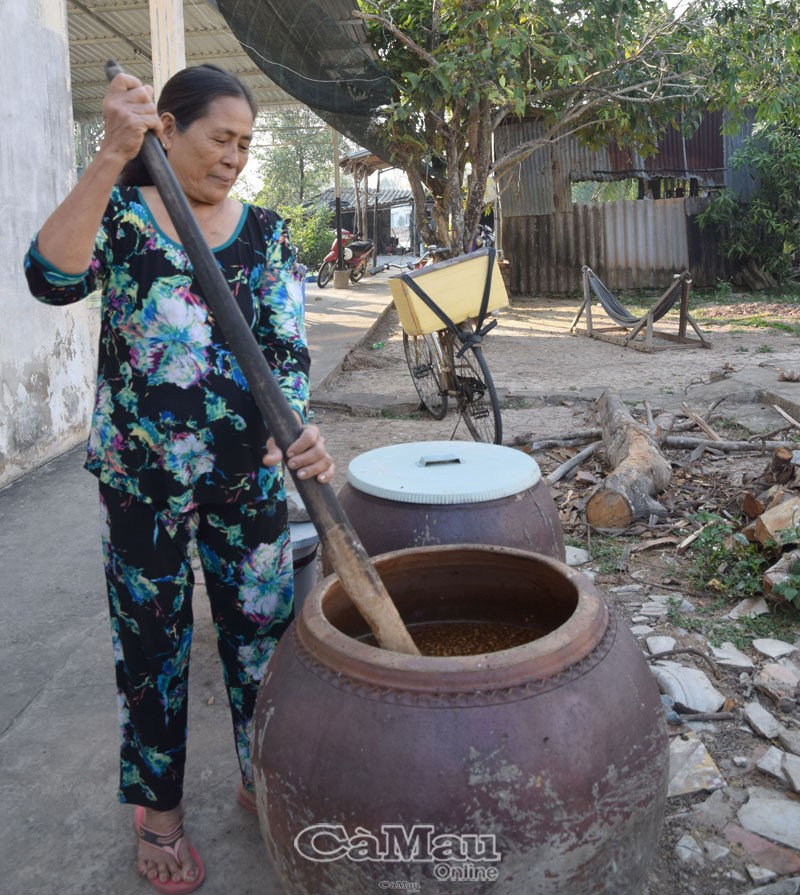 |
| According to Ms. Nguyen Thi Be, while drying, you have to stir occasionally to make the soy sauce cook faster. |
A pot of hot rice was served. Add a bowl of mixed vegetable soup cooked with some dried fish, and that was enough for the meal. Each piece of coconut was soaked in soy sauce, making it rich, fatty, salty, very delicious and quite tasty with rice. I have eaten this dish many times but sometimes I still crave it.
"Cong boat" braised fish sauce was also a popular dish of the people of my hometown at that time.
Since after Tet, the water in the canals and ponds has gradually dried up, fish sauce is scarce, the market is far away (and even if it were close, the villagers probably wouldn't go there often to buy food because of financial constraints), so they have to take turns with soy sauce, fish sauce, dried fish... to make meals.
There were days when the sauce was still stewed, but my mother changed the way of cooking by adding coconut milk. On the first rainy days of the season, the water in the ditches began to rise, and the bitter vegetables and morning glory were lush green. In some deep ditches, the bitter vegetables were completely submerged. She gently brushed away the alum and scum, gathered the vegetables with one hand, and used a knife to cut them with the other. In just a moment, the basket of vegetables was lush green, each stem soft, white, and translucent. A plate of boiled morning glory or early season bitter vegetables, dipped in the sauce stewed with coconut milk, was also extremely delicious. If it was bitter vegetables, after eating, drinking water, the sweet taste of the vegetables would still be on the tip of the tongue.
During the continuous early season rains, the perch that had been hiding in the shallow ponds during the drought began to emerge in search of a “promised land” to lay eggs and frolic. We kids were overjoyed when we caught them. However, each one had a skinny, long and slimy body, even though they were carrying eggs. The adults said, it was not delicious, it was just… braised in soy sauce. So the soy sauce had an additional use. Don’t be fooled, just try it. The fish meat was chewy, rich and sweet, also… top-notch.
There was a time at the beginning of the rainy season when anchovies were scarce, and then the water in the river began to dry up. On days when I came home from school, the river was full of water, I went to the garden to dig up some worms, hooked about a dozen fishing rods, and planted them in the rafts, clumps of bamboo shoots, and trumpet cups along the riverbank. At that time, there were quite a few coconut gobies living in the river. When the water was low, they went into their holes, when the water was high, they came out to look for food. After a few hours, fishing was also a matter of luck, sometimes 5-7 fish, sometimes only a few. Too little, my mother said, if the whole family ate this much, it would be like "a tiger eating to make up for its high price". So sometimes my mother broke off a handful of water spinach and Malabar spinach to cook with, sometimes she braised them in soy sauce to dip vegetables. Unlike the toughness of the early season perch meat, the coconut goby meat was more tender but fragrant and sweet, eating a bite left an unforgettable impression.
Although soy sauce can be used to make many dishes, not all soy sauces are delicious. The deliciousness of a dish depends on whether the soy sauce is good or bad. At that time, soy sauce was also widely sold. No matter how big or small a grocery store was, whether it had a lot of goods or not, it was almost always available in soy sauces. And the shop owners were not foolish enough not to choose good soy sauces to sell, "competing healthily" to retain their customers.
The other day, I happened to stop by a coffee shop in Hamlet 6, Tan Thanh Ward, Ca Mau City. And I also happened to know that the shop owner also has a traditional soy sauce making profession. She is Nguyen Thi Be, 69 years old this year, with more than 20 years of experience in making soy sauce. She said she inherited this profession from her mother.
Head of Hamlet 6, Ta Van Gop, “advertised”: “Ms. Be makes delicious soy sauce, which is clean and chemical-free. All the grocery stores in the area sell her soy sauce. Thanks to this job, I can support my children and stabilize my family life.”
Curious about the dish that had been my favorite since childhood, I made an appointment to come and learn how to make it. Mrs. Be happily said, “You can come anytime.”
The day I arrived, she had just finished cooking a batch of soy sauce and was in the process of fermenting it. In the yard, there was a batch that had just been salted, watered, etc. stored in a jar. She was also busily selecting soybeans, preparing to boil them at 3am to make a new batch. Mrs. Be said that making soy sauce is very hard work, and that the main profit is the labor.
Every week she produces 3-4 batches of soy sauce (each batch uses 30 kg of soybeans, making 90 kg of soy sauce); on big full moon and New Year's days, she can produce 5-7 batches.
To get a batch of soy sauce, the maker must go through many steps, from boiling the beans, fermenting the beans, then putting them in jars with salt, water, sugar... and then drying them in the sun. According to Mrs. Be, good soy sauce is soft and even without breaking in half, and the soy sauce does not have a sour taste.
To have soft soybeans, she has to wake up at 3am to light the stove, wash the soybeans, and put them in the pot to boil. The steps must be done quickly so that by 5am the soybeans start to boil. When the beans boil, she continues to watch the fire until 3pm (exactly 10 hours) when the beans are soft, then take them out to ferment. The fermenting process takes 2 days and nights. The drying process also takes 2-3 days, depending on the weather. The soybeans are ripe enough to be used when they float to the surface, have a deep yellow color, and a fragrant aroma.
She said, making soy sauce seems easy but is difficult. Easy is the simple steps, anyone can do it. The difficult part is making a good batch of soy sauce. This is all thanks to experience.
She said that in the past, in Ward 4, Ca Mau City, Lam Thanh Mau Street (near Ca Mau culvert) there was a village making soy sauce. Her mother also came from that village. However, now due to the high price of raw materials (soybeans, sugar, salt, etc.), soy sauce makers do not make much profit so they have all switched to other jobs. As for her, because she loves this job, she tries to stick with it, mainly making money from her labor. Each kilo of soy sauce she sells costs 10,000 VND, each month she earns 5-6 million VND in profit. On big full moon days and Tet, if she works more, her income will increase.
“Nowadays, people eat a lot of soy sauce, so I am not afraid of the consumption. I just pray that I have the health to do this job regularly, to keep my mother's job and have the conditions to manage the family,” she confided.
In the past, soy sauce was often associated with difficult times, shortages, and people living in poverty and frugal living. But now, soy sauce is present in almost every household from ordinary to luxurious families, in both urban and rural areas, from simple eateries to luxurious parties at restaurants. If you calculate, there are hundreds of dishes that all have soy sauce in them. For the dish of fish braised in soy sauce, there are dozens of types of fish to braise, from river fish to sea fish, each dish is rich and impressive.
There are many meat dishes that cannot be prepared without soy sauce. And there are many dipping sauces that use soy sauce as the main ingredient. Not to mention, many vegetarian dishes are also made from this “vegetarian and non-vegetarian” ingredient.
Soy sauce is a "high-class" dish, playing a very special role in Vietnamese cuisine./ .
Huyen Anh
Source: https://baocamau.vn/tuong-mon-an-dam-hon-que-a638.html









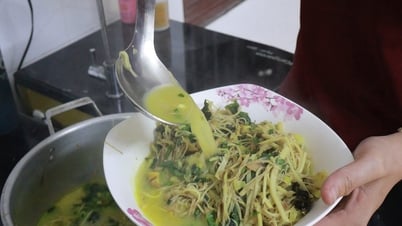

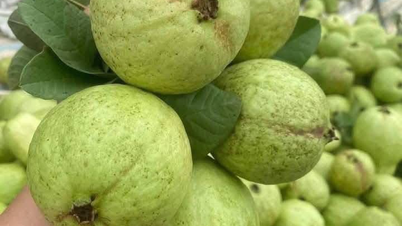
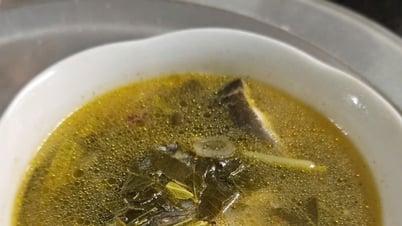


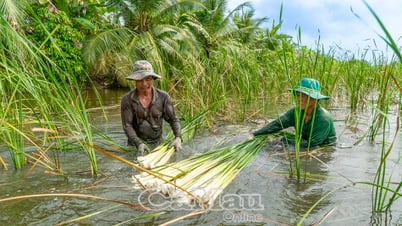






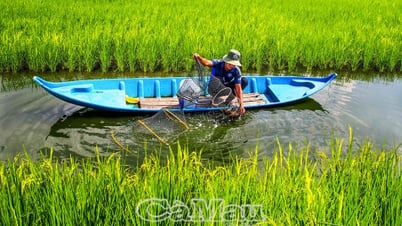


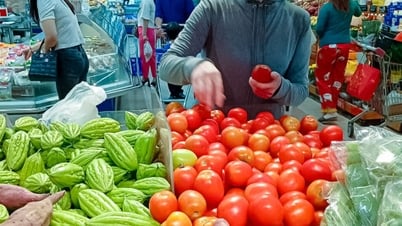














































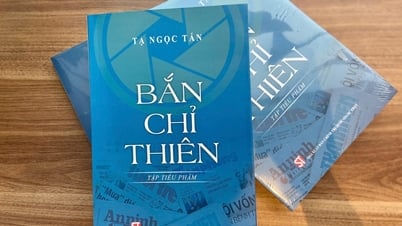
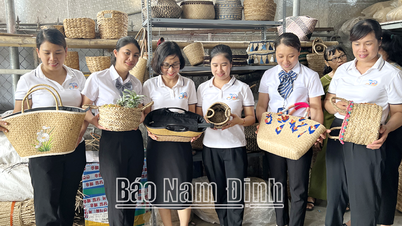



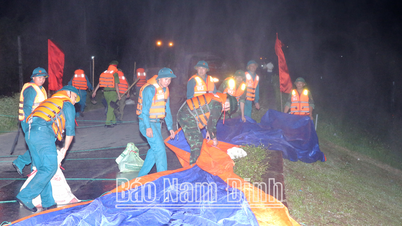
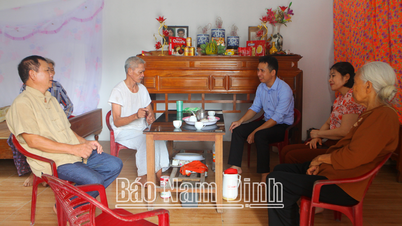







![[OCOP REVIEW] Tu Duyen Syrup - The essence of herbs from the mountains and forests of Nhu Thanh](https://vphoto.vietnam.vn/thumb/402x226/vietnam/resource/IMAGE/2025/6/5/58ca32fce4ec44039e444fbfae7e75ec)







Comment (0)